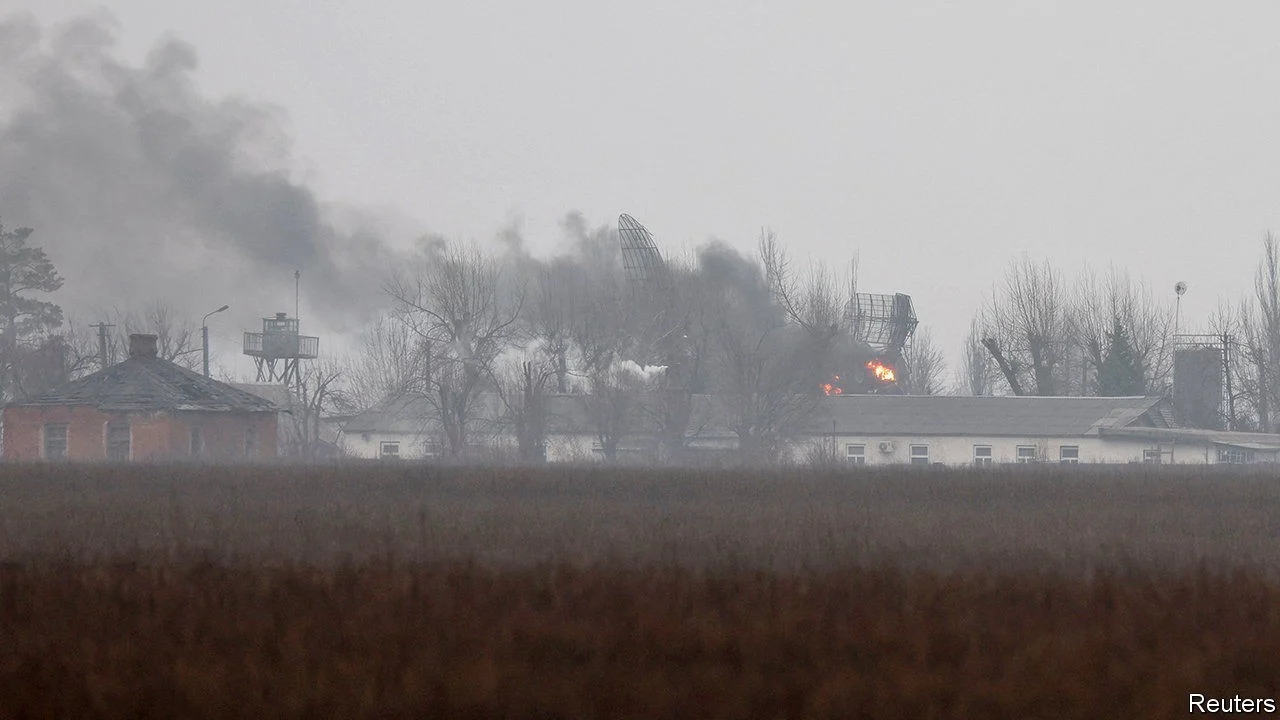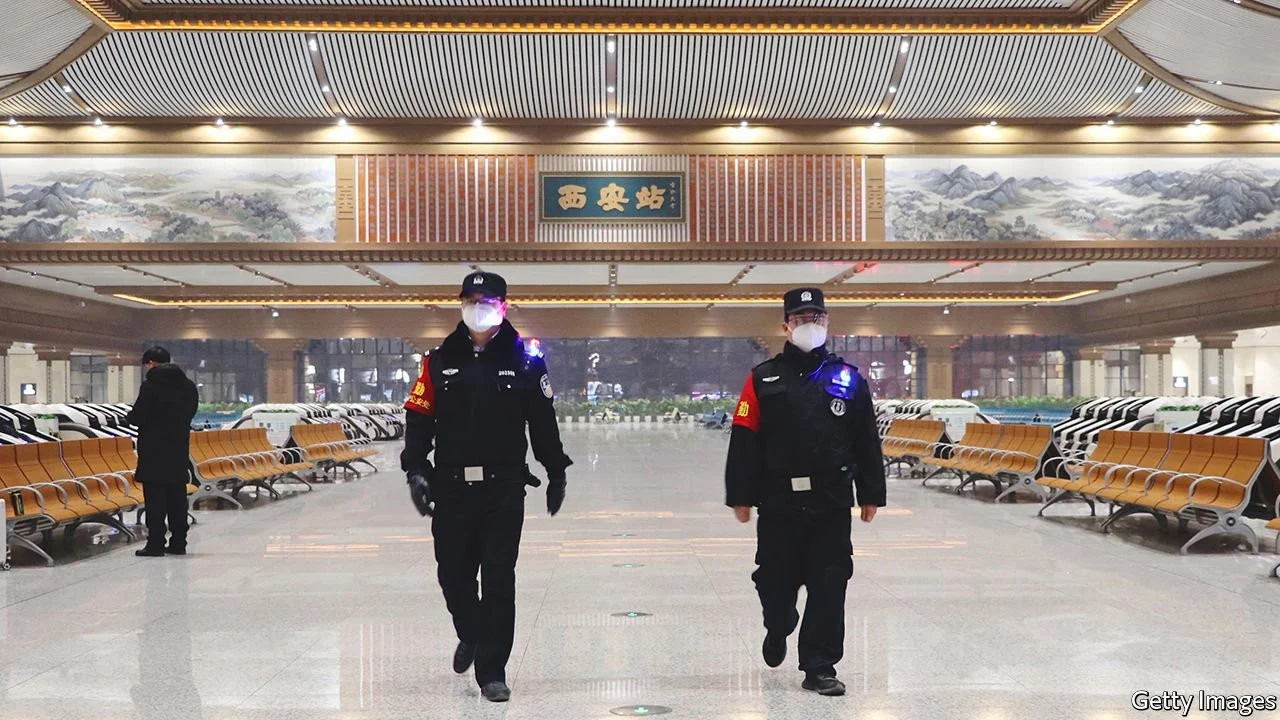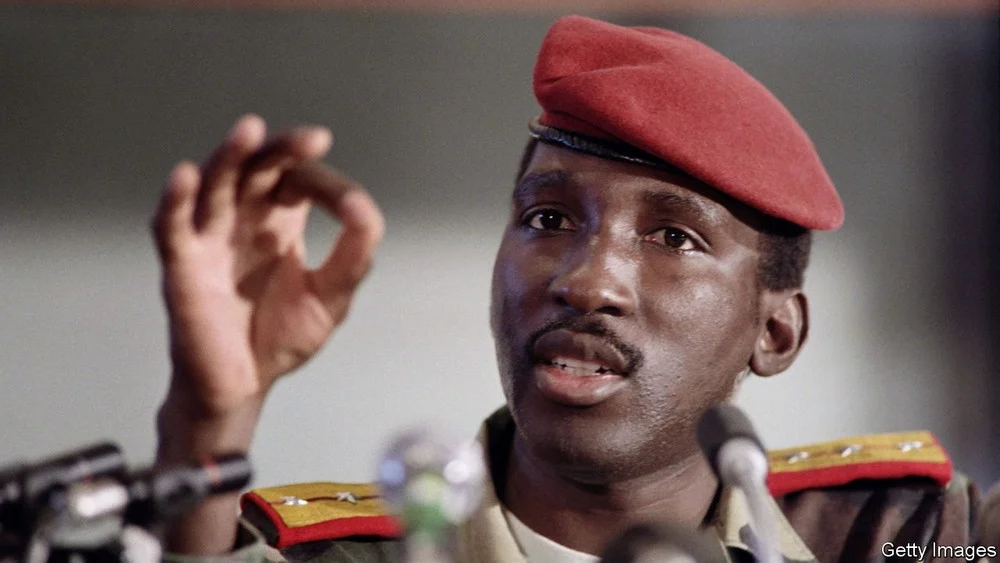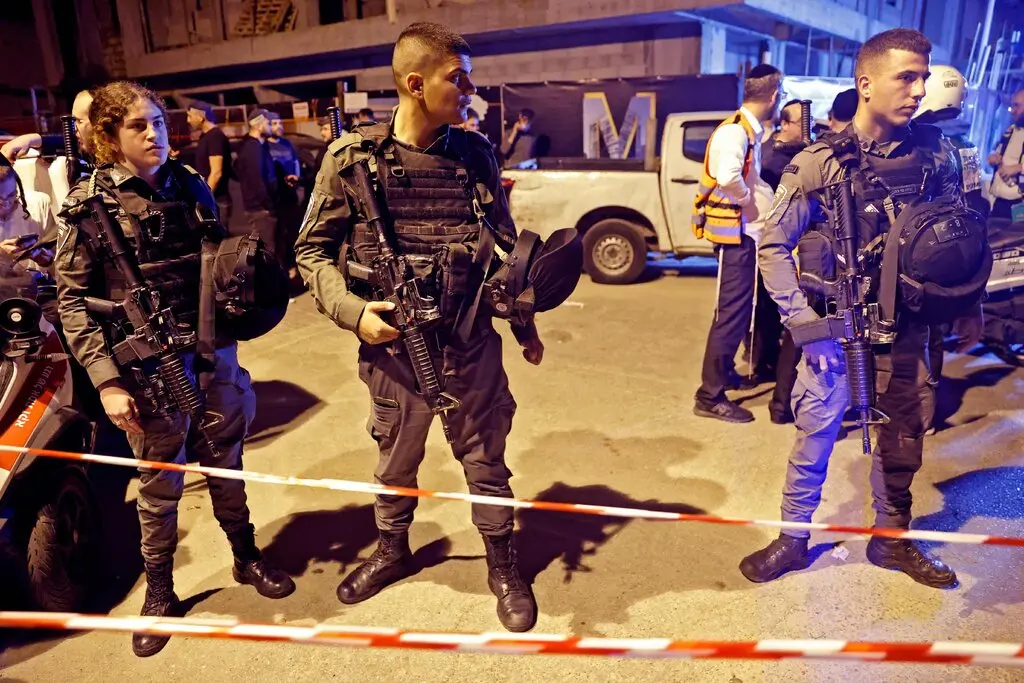
KYIV — VLADIMIR PUTIN’S invasion of Ukraine, long predicted by the West and long denied by him, began before dawn on February 24th with volleys of cruise missiles, artillery and other weapons. There were explosions near Kyiv’s main airport, as well as around other cities. The scope of the attack was not immediately clear, but all the evidence pointed to a large-scale operation. Early reports, still unconfirmed, said Russian troops were advancing on the eastern city of Kharkiv. The mayor of Odessa, a big port, said his city had been attacked, but that the attack had been repelled.
Having called up reservists a day earlier and declared a state of emergency, Ukraine’s president, Volodymyr Zelensky, imposed martial law across the country. In parts of Ukraine, people woke to the sound of sirens and took to their basements; elsewhere some knelt on the streets to pray. People rushed to take cash out of ATM machines as huge traffic jams formed on the roads leading out of Kyiv.
Chillingly, Mr Putin all but threatened nuclear escalation against the West after America and its allies sent additional troops to reinforce the eastern flank of NATO. Russia, Mr Putin pointed out, is one of the greatest nuclear powers in the world, adding: “A few words to those who might be tempted to interfere in the unfolding events from the outside. Anyone who tries to hinder us and…create a threat for our country and our people must know that the response will be immediate and will lead to consequences that you have never faced in your history. We are ready for any scenario. All necessary decisions in this regard have been taken. I hope you hear me.”
America, which has said it will not send troops to fight in Ukraine, denounced the “unprovoked and unjustified” attack by Russia. “Russia alone is responsible for the death and destruction this attack will bring, and the United States and its allies and partners will respond in a united and decisive way,” said a statement from President Joe Biden. Having imposed an initial round of sanctions earlier in the week, he said he would announce further measures on February 24th. The EU, Britain and other countries look set to follow suit. A G7 video summit was called for later in the day; EU leaders are also due to discuss the crisis.
Ukraine’s foreign minister, Dmytro Kuleba, tweeted: “The world must act immediately. Future of Europe & the world is at stake.” He called for “devastating” sanctions on Russia, including its exclusion from the SWIFT system for international financial transactions. He also pleaded for the West to provide Ukraine with more weapons and aid.
Oil and gas prices jumped, as the Brent crude benchmark rose past $100 per barrel for the first time since 2014. Global stockmarkets fell. Moscow’s exchange was suspended, following a sell-off earlier this month caused by war jitters. Civilian airliners were told to stay clear of Ukrainian airspace.
Russia’s strikes began around 4:40am Kiev time, shortly after Mr Putin went on television to announce a “special military operation”. He claimed that NATO’s eastward expansion posed a threat to Russia, drawing a parallel with Nazi Germany’s attack on the Soviet Union. And he said Ukraine posed a threat, too—absurdly claiming that it was responsible for a “genocide” of Russian speakers and was seeking to acquire nuclear weapons after giving them up in 1994. He said he did not intend to occupy Ukraine, though he questioned its borders, and urged Ukrainians to lay down their weapons.
Russia’s defence ministry said it was taking aim only at military targets, and had “incapacitated” Ukraine’s air defences. It denied Ukrainian claims to have shot down Russian aircraft.
After weeks of fruitless diplomacy, Russia’s president proved deaf to all appeals for peace. He refused to take an eleventh-hour call from Mr Zelensky, and sent his forces into battle even as the UN Security Council was meeting in an emergency session. Ukraine’s ambassador got the last word, telling his Russian counterpart: “There is no purgatory for war criminals. They go straight to hell.”
Mr Putin’s march to war became apparent from November, when America sounded the alarm about the movement of dozens of tactical battalion groups, the basic units of Russia’s army, towards Ukraine’s borders. By the eve of the invasion, he had deployed more than two-thirds of his country’s ground combat power around the country.
Mr Putin long pretended they were on exercises; Mr Zelensky claimed that Russia was bluffing, hoping to prevent a panic that might destabilise his government and give Mr Putin victory without firing a shot. All that changed in the past week, when the Kremlin began claiming that Ukraine had committed “genocide” of Russian-speakers in the Donbas region and was about to seize two breakaway regions by force. There followed a series of alleged provocations—explosions in Donbas, and even incursions into Russia by Ukrainian troops. Western governments have said these were staged by Russia to manufacture a pretext for war.
Then on February 21st Mr Putin held an extraordinary meeting of his senior officials, in which he asked each of them to endorse the recognition of the two republics on live television. He claimed Ukraine was an artificial creation of the Bolsheviks who ruled the former Soviet Union. That evening he delivered a blood-curdling speech, laying out the case for war. Russian troops, portrayed as peacekeepers, marched into the republics that evening (though some had been present semi-covertly for years). A day later Mr Putin clarified that he was recognising the pseudo-republics within the full extent of their claimed border, encompassing the entire “oblasts” or administrative regions of Donetsk and Luhansk, most of which lay beyond their control. That territory includes the port of Mariupol, a city of almost half a million people.
On the eve of the invasion, Volodymyr Zelensky, released a video appeal to Russians, telling them: “We don’t need war. Not a cold one, nor a hot one, nor a hybrid one.” He said he had tried to call Mr Putin, but was met with silence. Hours later, at an emergency meeting of the UN Security Council, the secretary-general, Antonio Guterres urged Russia: “President Putin stop your troops from attacking Ukraine. Give peace a chance.” All to no avail. As the council debated, Mr Putin issued his own video complaining that : “On our historic lands, a hostile anti-Russia is being created.”
Russia’s assault was met with international condemnation. Jens Stoltenberg, NATO’s secretary-general, warned of “a grave breach of international law, and a serious threat to Euro-Atlantic security”. South Korea said it would have “no option” but to join sanctions against Russia; earlier Australia and Japan said they would do so, too.
In Russia the reaction among the foreign-policy elite was one of shock. “I will support our troops, but I still consider this a big mistake, and my support of the Russian government will further decrease”, warned Dmitry Stefanovich, a defence expert. “I have no words”, said Elena Chernenko, a journalist with Kommersant, a daily newspaper. “This is a catastrophe,” wrote Sergey Utkin of the IMEMO research institute, part of the Russian Academy of Sciences. “For Russia, Ukraine and beyond.”
The origins of the crisis lie in 2014, when a pro-European uprising toppled Viktor Yanukovych, Ukraine’s then president, who had signed an association agreement with the European Union only to rip it up under pressure from Russia. Vladimir Putin, Russia’s president, responded in the same year by annexing Crimea and invading eastern Ukraine, where he established a pair of Russian proxies—the Donetsk and Luhansk “republics”—in the Donbas region. Over the succeeding eight years, as Ukraine’s government turned to the West for political and military support, Mr Putin grew more hostile.
Now that hostilities are breaking out, the most immediate question is how far Russia is prepared to go to subdue its neighbour. One possibility is that it will aim to take all of the statelets’ claimed territory. A war for Donbas would be bad enough. Since January, however, Western security officials have been warning that Mr Putin is set on an even broader invasion aimed at toppling the Ukrainian government. Joe Biden, America’s president, and Boris Johnson, Britain’s prime minister, have both said that Russia would probably aim for Kyiv, Ukraine’s capital. NATO officials concur with those British and American assessments. Russian military forces in southern Belarus have crept closer to the border in recent weeks, with many organised in tactical formations that would allow a swift thrust south towards Kyiv, should Mr Putin order one.
The suggestion might seem outlandish; even Western politicians familiar with the intelligence seem to disbelieve what they are hearing. After all, Ukraine’s population is over 44m, roughly double that of Afghanistan and Iraq, which America and its allies occupied in 2001 and 2003 respectively, and struggled to control in the face of bloody insurgencies. Even so, the Russian invasion force and those which may follow behind it, like national-guard units, “appear more than sufficient to attempt an occupation of Ukraine’s eastern regions”, argues Michael Kofman, an expert on Russia’s armed forces at CNA, a think-tank.
Ukraine’s eastern regions plus Kyiv amount to only 18m inhabitants, he notes, with the southern coast another 3m. That would give Russia a comparable force density ratio—the number of troops relative to the population—that America enjoyed in Iraq. Except Russia would enjoy some advantages that America did not. It knows the language, understands the terrain and would be “much more ruthless in the application of violence”, notes Jack Watling of the Royal United Services Institute (RUSI), another think-tank.
Russia might also believe that at least some Ukrainians would greet them as friends, if not liberators. “Meeting with Ukrainian security officials there is a widespread acknowledgement that many of their colleagues—even in some quite senior positions—are working for or sympathetic to Russia,” argue Mr Watling and his colleague Nick Reynolds in a report published by RUSI on February 15th, based on extensive interviews with Ukrainian military and intelligence officials earlier that month. The report claims that Russian intelligence services dramatically expanded their activity in Ukraine over the past year, identifying locals who could serve as collaborators in an occupation—and also those who might lead a resistance movement.
The second question is how America and its European allies will respond to the invasion. In recent weeks America has sent thousands of additional troops to Germany, Poland and Romania. Britain has also doubled the size of its contingent in Estonia, while Germany has reinforced Lithuania. Now NATO will have to further beef up its northern and southern flanks—on the Baltic and Black seas, respectively—says Jamie Shea, a former senior NATO official. The alliance may activate its NATO Response Force (NRF), a 40,000-strong unit that has a high-readiness, and currently French-led, brigade as its nucleus. The force has never been used before and its activation would require unanimity from all 30 allies.
Though NATO will be in “permanent crisis-management mode” for some time to come, notes Mr Shea, it will also have longer-term issues to consider. The alliance’s leaders, who planned to meet for a summit in Madrid in June, will probably convene sooner. NATO officials have been writing a new “strategic concept”, a plan for the alliance’s priorities in the years ahead. American ones have been working on a national-security strategy and a nuclear-posture review. A war in Ukraine will affect all those efforts; some will have to start from scratch, reckoning with a dramatically heightened threat from Russia.
In his February 21st speech Mr Putin laid out a version of history in which, by his telling, the Russian empire was egregiously broken up by the Bolsheviks into territories that became separate independent states after the cold war. Though his explicit aim was to undermine the legitimacy of Ukraine, other former Soviet republics would have cause for alarm over his irredentism—including NATO members like Estonia, Latvia and Lithuania, and non-NATO members like Finland, a former Russian possession. On February 22nd Finland’s foreign minister warned that Mr Putin’s actions were “based on some sort of concept of…rebuilding the Soviet Union”.
All that is compounded by a de facto Russian absorption of Belarus, putting considerable Russian firepower on the border of Poland and Lithuania. That would make the slender “Suwalki gap”—a strip of land wedged between the Russian exclave of Kaliningrad and Belarus, which connects Poland to the Baltic states—even harder to defend in a war. “If Putin succeeds in Ukraine, he might decide that he needs a land bridge to link Kaliningrad to Belarus and then Russia running through Lithuania or Poland,” warns Stephen Hadley, who served as America’s national security adviser between 2005 and 2009. “That would mean a war between Russia and NATO.”
Russia’s military moves and the Western response to them will create a more dangerous situation. “Neither Russia nor NATO want this crisis to escalate into a Russia-NATO conflict,” says Samuel Charap of the RAND Corporation, a think-tank. “But with huge numbers of Russian forces conducting large-scale combat operations on NATO’s doorstep, it’s very easy to imagine how things could spiral out of control quickly.” Russian and NATO fighter jets, surveillance aircraft and warships will find themselves in close and constant proximity. That is a particular concern in the Black Sea, where Russia last year fired warning shots close to a British warship that entered Crimean territorial waters. To avoid misunderstanding, Mr Charap says NATO will need to make clear to Russia that such moves to reinforce eastern Europe are not a prelude to NATO military intervention in Ukraine—something for which there is no appetite.
If Western countries impose heavy economic sanctions, as they have promised, Russia may hit back in ways that further raise the temperature. A particular concern is the risk of cyber-attack, whether deliberate or inadvertent. A crude but disruptive cyber-attack struck Ukrainian government websites on February 23rd.
The economic consequences may be more substantial. In itself, the direct impact of sanctions on Europe’s economy will be modest. Russia is poor relative to the rest of the continent. Its exporters depend on European demand but not vice-versa. Goldman Sachs, a bank, estimates that the loss of trade caused by a 10% contraction in Russian demand would cost the euro zone only about 0.1% of its GDP, and Britain only about half that. The trouble is that some imports from Russia are crucial and scarce inputs to Europe’s production.
In normal times Russia supplies 30-40% of Europe’s gas. Although that share has fallen in recent months as Europe has increased LNG imports, an additional supply squeeze—brought about by sanctions or in retaliation for them—could disrupt Europe’s industrial production. Pricier energy will cause pain for consumers, who may cut back spending elsewhere. And if financial markets take fright at the heightening of the crisis, that will cause economic damage by reducing investment.
The pain for European exporters will be spread unevenly across countries. Russia is one of the top two destinations for goods exported from both Lithuania and Latvia. It is also a significant source of external demand for Finland, Greece and Bulgaria. These places would take a larger-than-average hit from a collapse in trade. Yet the security of Finland and Bulgaria is also vulnerable to a more aggressive Russian posture, so both countries may be willing to pay a high price to shore up deterrence.
Then there is the human cost. In Syria, where Russia intervened in 2015, the Kremlin’s way of war involved often indiscriminate force against populated areas, including the bombing of hospitals. Civilian casualties in Ukraine are expected to be considerable. On February 21st Mr Putin promised, ominously, that “all those guilty of crimes against Russians” would be punished.
Others will flee. In eastern Europe Ukraine’s neighbours are bracing themselves for a flood of refugees. In January Ukraine’s defence minister warned that a major war would cause “the sudden appearance of between 3m and 5m Ukrainian refugees”. On February 8th Poland’s deputy interior minister said that “up to a million people” might enter Poland in the worst-case scenario. Romania’s government would struggle to absorb large numbers of refugees with the capacity it currently has in place. The growth of large refugee camps in these countries, and in Hungary, could exacerbate divisions between eastern and western Europe, while fuelling right-wing populist movements. As Antonio Guterres, the UN secretary general, said on February 22nd, the “world could see a scale and severity of need unseen for many years.”
Russia was not threatened by NATO or Ukraine. Its invasion of the sovereign state next door is a war of choice, conjured out of nothing by Mr Putin. History will judge him harshly. If Russia is drawn into a long-lasting partisan war, so will the Russian people.
By The Economist




